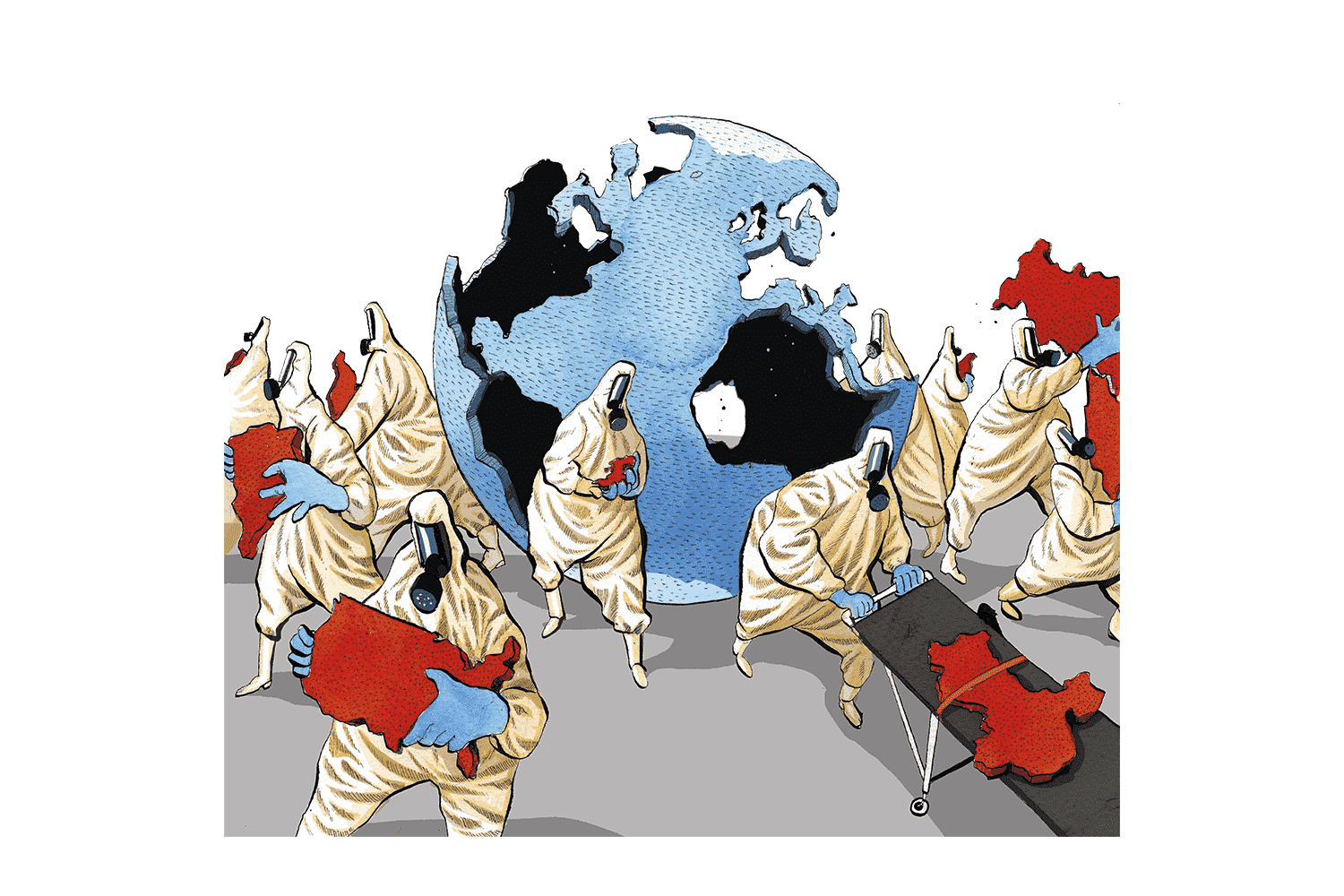For some time now, Covid has been rising in Scotland – there are now more Scots in hospital with Covid than at any time throughout the winter. A freak, or a sign of what’s to come nationally? The ONS survey answers that question today, confirming that Covid cases are rising nationally: some 4 per cent of England’s population, it says, would test positive. In Northern Ireland it’s closer to 8 per cent and in Scotland 5.7 per cent. Have waning vaccines created space for another wave – and do we need to worry?
Just as Gauteng and South Africa then Lambeth and London were the early warning signs for Omicron’s rise and speedy peak, so seems to be Scotland now. The ONS survey have shown cases rising there for weeks and it’s been puzzling scientists. Scotland had more restrictions over Christmas and is still yet to phase out masks. Could a new variant be emerging?
Of course a lot of the rise in hospitalisations (across the UK) can be explained by ‘incidental admissions’. English figures released yesterday and analysed on the Spectator data hub suggest this proportion is still climbing: now at 57 per cent across the country and even higher in London where three-quarters of Covid hospital patients are primarily being treated for something else. Has the virus become even more infectious in hospitals?
Covid isn’t going anywhere
We’ve known since the new year that the immunity from boosters will start to wane – the UKHSA thinks after about ten weeks. But we’re not seeing huge drop-offs in the data. This week’s ONS antibody survey suggests 98 per cent of adults still have antibodies.
It’s not just Scotland where something unusual is going on. Covid charts for Hong Kong have been rocketing upwards for days. Cases are well past their previous peak and deaths have surpassed even England’s winter peak. Virologists insist there are no signs of a new variant there and it’s likely down to a poorly targeted vaccination programme. Their booster coverage is particularly low in older age groups, something Britain does not need to worry about having given a third jab to some 95 per cent of over-60s.
As we know all too well viruses continually mutate, and the Omicron variant is no different. Sequencing from France has found that a ‘Deltacron’ variant has been circulating since January. This same variant has been found in Denmark and the Netherlands too. But it’s unlikely this variant will take off because there’s no evidence it can outcompete ‘pure’ Omicron.

Two months ago though, Omicron split into a new subvariant currently unnamed and known as BA.2. Sequencing data shows it’s now the dominant variant in the UK (accounting for 60 per cent of cases by the end of February). At a briefing this week scientists from Imperial’s React study said: ‘From what we’ve seen and what we know, BA.2 is more transmissible’. They also found that on PCR tests, BA.2 cases had lower Ct values – meaning higher viral load. Perhaps crucially, BA.2 has spread faster in Scotland than England. This might explain why Scotland has been ahead in the rises in hospitalisations and cases.
But even this is not necessarily a reason to worry. The increased transmissibility, coupled with the rise in incidental admissions – especially in London – gives a hint that we may be looking at an even milder variant than Omicron’s original formation. And as Matt Ridley explained in the magazine, there are good reasons to believe that as respiratory viruses get more transmissible, they also become milder.
With restrictions coming to an end after two years of lockdowns and mask wearing – often to little provable benefit – it’s perhaps inevitable that there’d be increases in cases. But there aren’t yet signs in the data that social mixing is increasing all that much: Sage’s preferred survey for mixing (CoMix) shows us having on average three contacts per day, in line with the average at the end of lockdown. And Google mobility data for workplaces show travel is still around a quarter down on before the pandemic, whilst recreational travel is still ten per cent lower on a weekly average.
The truth probably is that this is all to be expected, and it’s what we always knew would happen. Covid isn’t going anywhere. As immunity drops in local areas (those hit by new variants first) cases will rise until immunity is regained. Inevitably, there will be calls to rethink the ending of restrictions – especially in Scotland and Wales who haven’t quite fully phased them out yet – but we should not panic. Covid now has a lower infection fatality rate than influenza (which has been totally absent this winter). NHS pressure is beginning to ease and there are plans in place to boost the vulnerable. We need to keep an eye on the ONS survey and dashboard data. But there’s no reason to panic.
This article is free to read
To unlock more articles, subscribe to get 3 months of unlimited access for just $5








Comments
Join the debate for just £1 a month
Be part of the conversation with other Spectator readers by getting your first three months for £3.
UNLOCK ACCESS Just £1 a monthAlready a subscriber? Log in